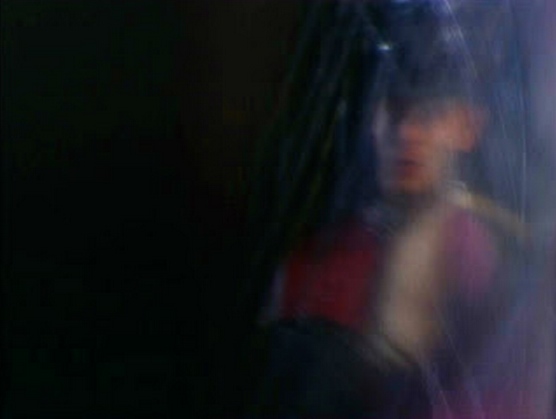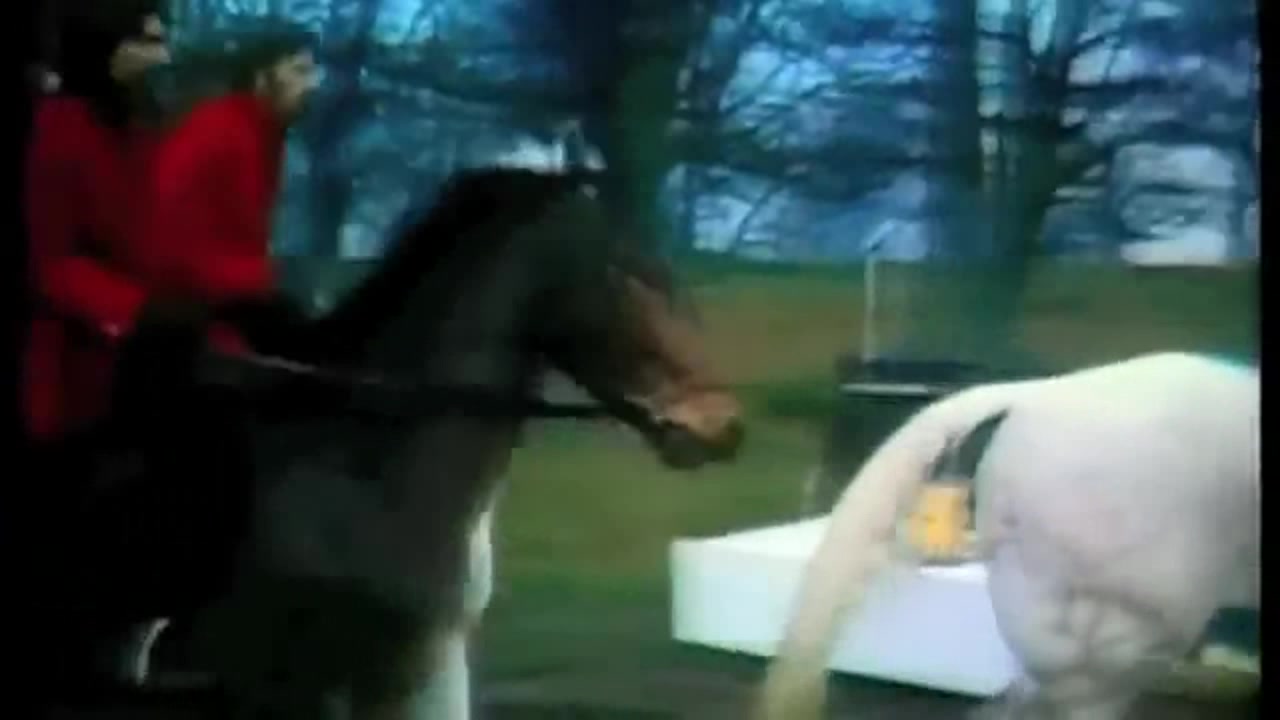Through the lens; meeting the Beatles, Strawberry Fields, Knole, Sevenoaks 1967
A rare memory here of the Beatles first trip to Knole, for the filming of the Strawberry Fields promo video. The finished video would feature footage of the band on horseback, riding past the 430 & 730 amps, cabs & guitars on a platform in the background. The first day of the shoot (Tuesday 31st January 1967) proved to be quite a day for a local Sixth-Former, Alan Cutts, who witnessed some of the filming;
It is getting on for fifty years since I met the Fab Four, by the remotest of chances. Given the personalities involved, it would be surprising if the memory dimmed even slightly… I was the first person to come across them, when an afternoon School run in Knole brought us to the lads filming, which was a wonderfully diverting sight on a freezing Winter’s day. Sevenoaks School operated for six days per week in order to get in three afternoons of sport, and this was one of the Hilary Term pursuits. There were two of us on the training run; our route went around the house and back to the Lodge down from the Manor House.
When I stopped by, it was for a brief rest; there were Minis parked nearby, and the odd Roller.
I was at a party some months before on Eel Pie Island, where Lennon had put in a fleeting appearance. John had maybe recognised me despite the running kit, saying “Ay oop!”, with a remark about so that’s how you southerners dress in the winter, with a wink. Maybe he didn’t recognise me and it was just a friendly greeting…that’s how the film crew realised there was not really an issue.
I spoke with John, and Ringo was voluble too. We chattered about the ideas they wanted to act out, which I did not follow too well, as it was private to the band really. Lennon was speaking about the real location of Strawberry Fields, but his references were strange and only made sense much later when the record had been out awhile, and folk could understand what was being imagined. There are some vague phrases in the lyrics even now. Both he and Paul, in retrospect, seemed to know what they wanted to create. I had more a sense of watching something starting to happen, a happening, as was the word then.
Ringo was very pleasant, and spoke about ordinary stuff. There was not really a drumming role anywhere at that stage, and not a guitar in sight. The lads were following directions called by the film crew, intermingled with retorts from the Band, mostly disrespectfully funny.
John discussed briefly where they were shacked up; Ringo nodded, speaking of the Royal Oak, I thought. there was general chit-chat as they dashed hither and thither, getting things done under a volley of orders – looking back not wonderfully planned, whimsical.

“…This (internet) photo captures the cold day quite well, and the colours are exactly as I remember them, with the trees leafless and spiky, and everything waiting for Spring. The camera on legs is the one I looked through, although then it was pointing down more. We were over to the left a bit, and there was a bushy outcrop which served to segregate me and the Four, three with Paul up in his tree, way over left, or two with George sulking/resting. He does look cold ! I have to be careful not to embellish true memory or stir stuff into presumed recollection, but the mood sense is good. The light faded about four pm, so I continued on my run, with a wave goodbye, not wishing to be a nuisance; but I had what I wanted, some time there, watching and speaking, generally out of the way”.
Truly exciting, better than a glimpse across a party room of a revered hero, now actually making eye contact, happy moments, looking back, so very near that it was almost ordinary, like with one’s mates.
Paul was up on a tree branch; no piano then, that was much later, as per the videos, with his big fluffy dog below. In a comic broad Northern/Scouse accent, “Eeehh..”, he was questioning what “Me dog” was up to at the foot of the tree.
There was no music actually being played in the Park when I was there, just some footage being run out. Films, so forth. They were very busy but did send me a photo, I gave my address, but never expected anything. I got it copied years later as it was falling apart.
The photographers in Knole noted that our contact was friendly and snapped a couple of pictures, one of which they sent on to me a while later. There were several shoots taken in Knole, and the February ones, which may have turned to Penny Lane backings after the SFFE ones had been completed, were those commonly recalled by the many young visitors to the park, including coeval Sennockians. The Chronicle ran a brief piece at the time.
The entrance to Knole was largely hidden by trees but this one stood alone, and yet was secluded. Last time I was there was in 1990 on walkabout, but so much had changed … now some of the paths are metalled and the old tracks are long gone.
The full shoot was a couple of weeks later on the SECOND visit in Feb when many Sennockians cut school to wag a glimpse of the foursome, news having leaked out from my day there, which was Day One. Unique experience, and I did not splash it about – it was my own experience, & special.
The ‘Owl House’ ( or ‘Bird House’) and the crumbling old arch were off the run we did, so we bypassed the second site. That one is featured in the SFFE footage all over You-Tube etc, and the piano and period dress are mocked up in the then mishmash of cultures adorning the young guitar-wielding brethren of the revolution. There were horses and so on, from what I have seen many years later.
The real social life in the town then centred upon La Cabana, and several pubs.. ‘La Cabana’ coffee house was the Cavern Club of the time in Sevenoaks. My peers, and I, were aficionados of La Cabana in 1961, as schoolboys ( & later as Mods and Rockers in the evenings… the wall-hung juke-box…) The embryonic band ‘Breed’ played there, two of whose members (Ray Bennett and Bill Bruford) went on to fame and fortune in association with King Crimson and Yes. Fights between the Mods and the Rockers, and before that the Teddy-boys, had been a part of street life in the mid-60s; there was still a sense in the air of Mods and Rockers lurking in dark alleyways.
We had seen John some months before at the party on Eel Pie Island; lots of pretty things were there, hanging on his every movement. I don’t remember how we got on to the Island, but there were a number of people off their heads who got drenched. One has to be careful with rivers, so forth, although it was quite shallow I think.
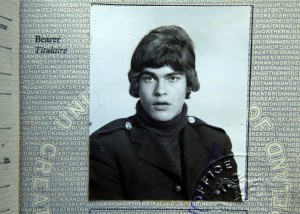
The author, 1967
Sadly there are no autographs nor any written dialogue at all from my day in Knole. I had nowhere to carry anything, being in shorts and running gear despite the chill air. When Hendrix died, we were all just shocked at the loss to music, but it was an accident waiting to happen, we understood much later. “The dancers are all gone under the hill” now, to recall Eliot.
( Text – © Alan Cutts, 2016 )
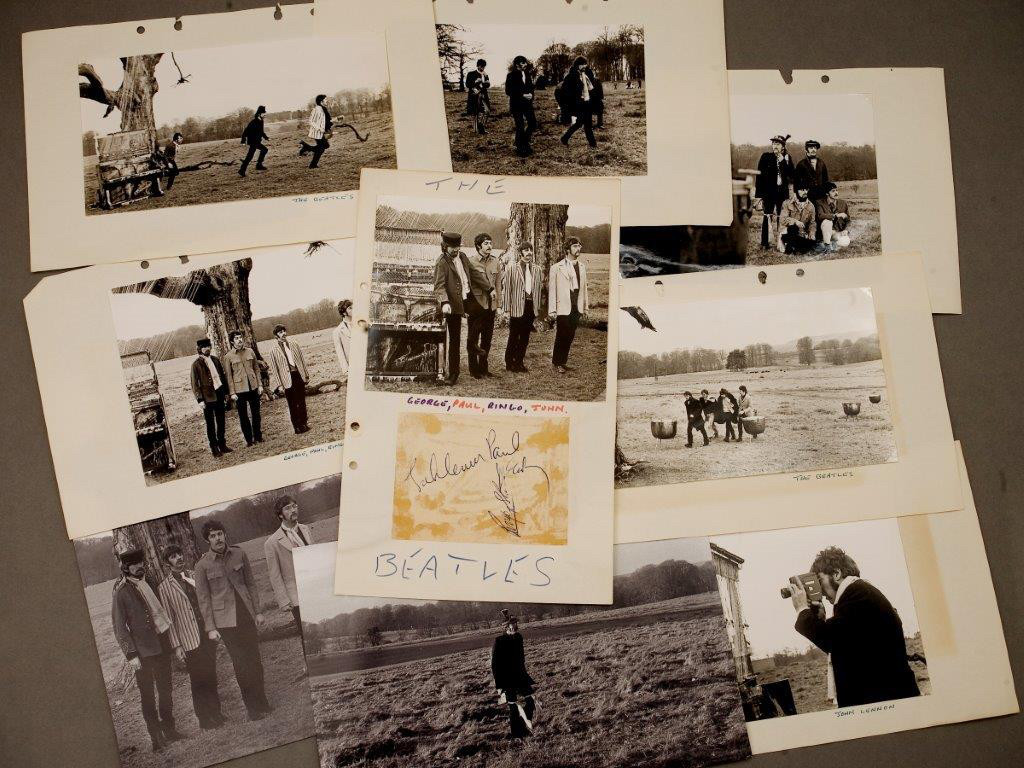
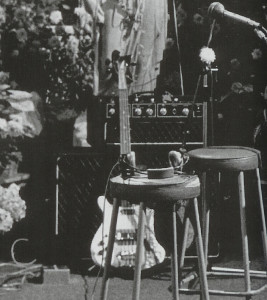
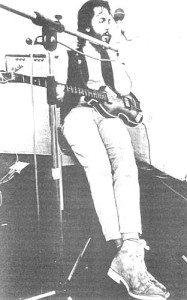
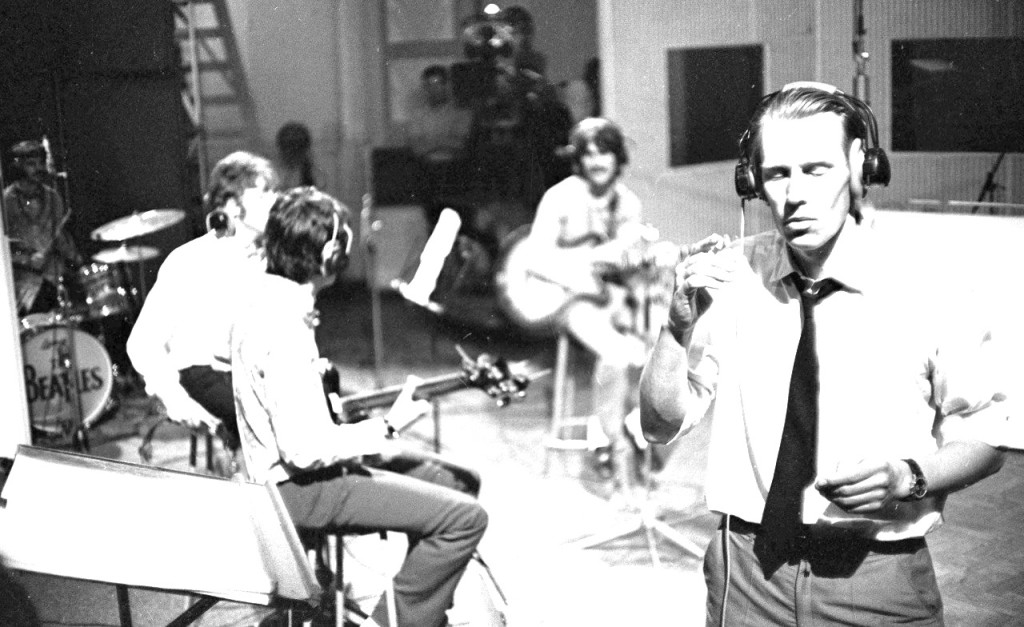
 era recording.
era recording.
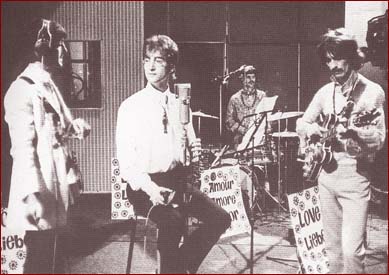 The situation too, that same part of the studio/ wall/divider area, that baffle…it seems reasonable to suggest (-someone probably has already?) that this is from the same time, and therefore shows the same amp that George was using. Probably the same Conqueror head too, that was plonked on top of the 430’s cab for the final broadcast? (It looks slightly askew, suggesting it wasn’t firmly secured to the cabinet). Another photo from that day showed a blurred amp/cab in the background behind Lennon, but while things were being moved around. Very suggestive, especially with the final use of a conqueror head. If this is the same amp, then it helps to give us an impression of an amp, cab and mike behind the baffle, and a better sense too of the equipment & arrangements in the lead-up to the broadcast. The Guitar/Bass Isolation Screens with the long chrome handles running along the top were introduced in late ’66; they had wooden frames, and fabric over an absorbent material filling (from Recording The Beatles).
The situation too, that same part of the studio/ wall/divider area, that baffle…it seems reasonable to suggest (-someone probably has already?) that this is from the same time, and therefore shows the same amp that George was using. Probably the same Conqueror head too, that was plonked on top of the 430’s cab for the final broadcast? (It looks slightly askew, suggesting it wasn’t firmly secured to the cabinet). Another photo from that day showed a blurred amp/cab in the background behind Lennon, but while things were being moved around. Very suggestive, especially with the final use of a conqueror head. If this is the same amp, then it helps to give us an impression of an amp, cab and mike behind the baffle, and a better sense too of the equipment & arrangements in the lead-up to the broadcast. The Guitar/Bass Isolation Screens with the long chrome handles running along the top were introduced in late ’66; they had wooden frames, and fabric over an absorbent material filling (from Recording The Beatles).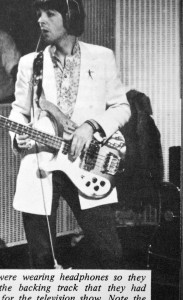
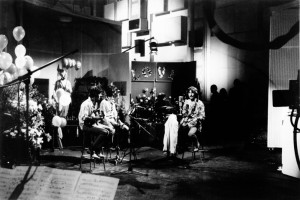
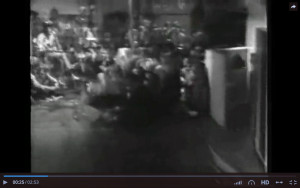
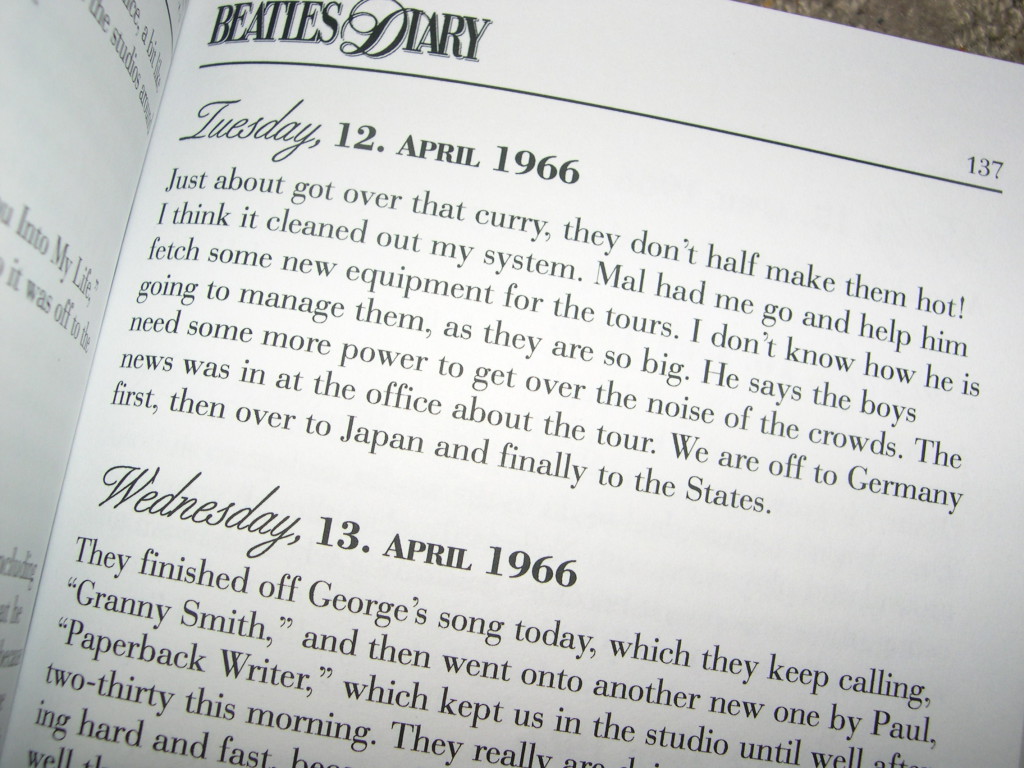
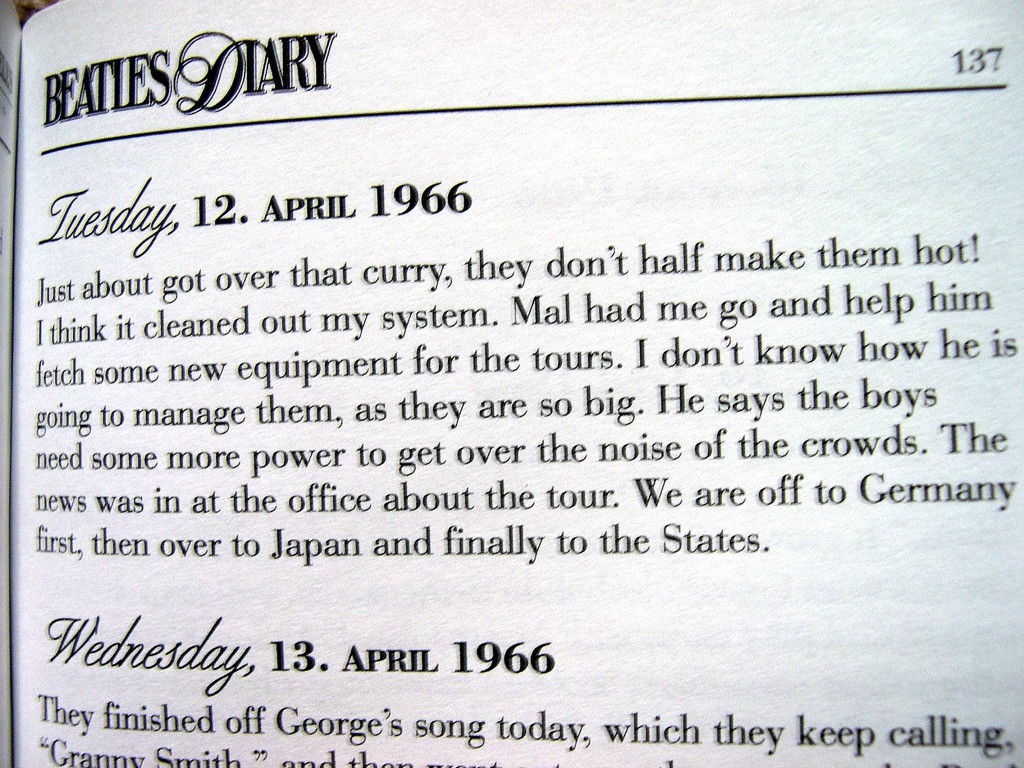

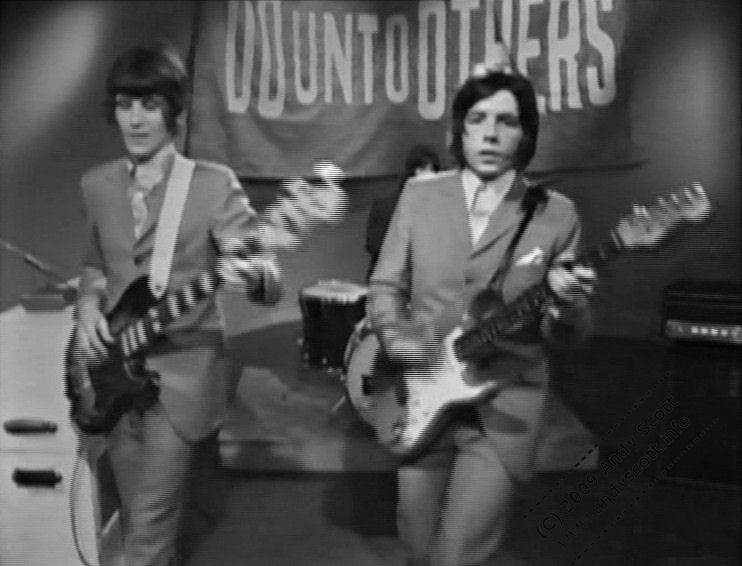
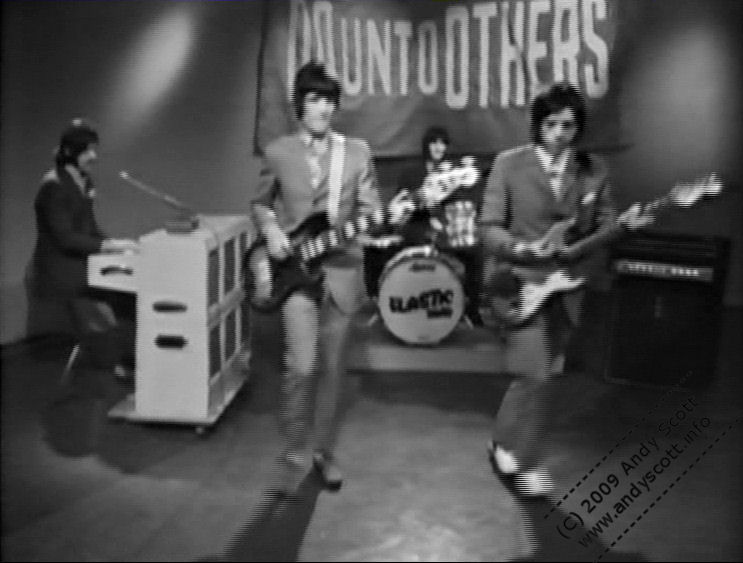
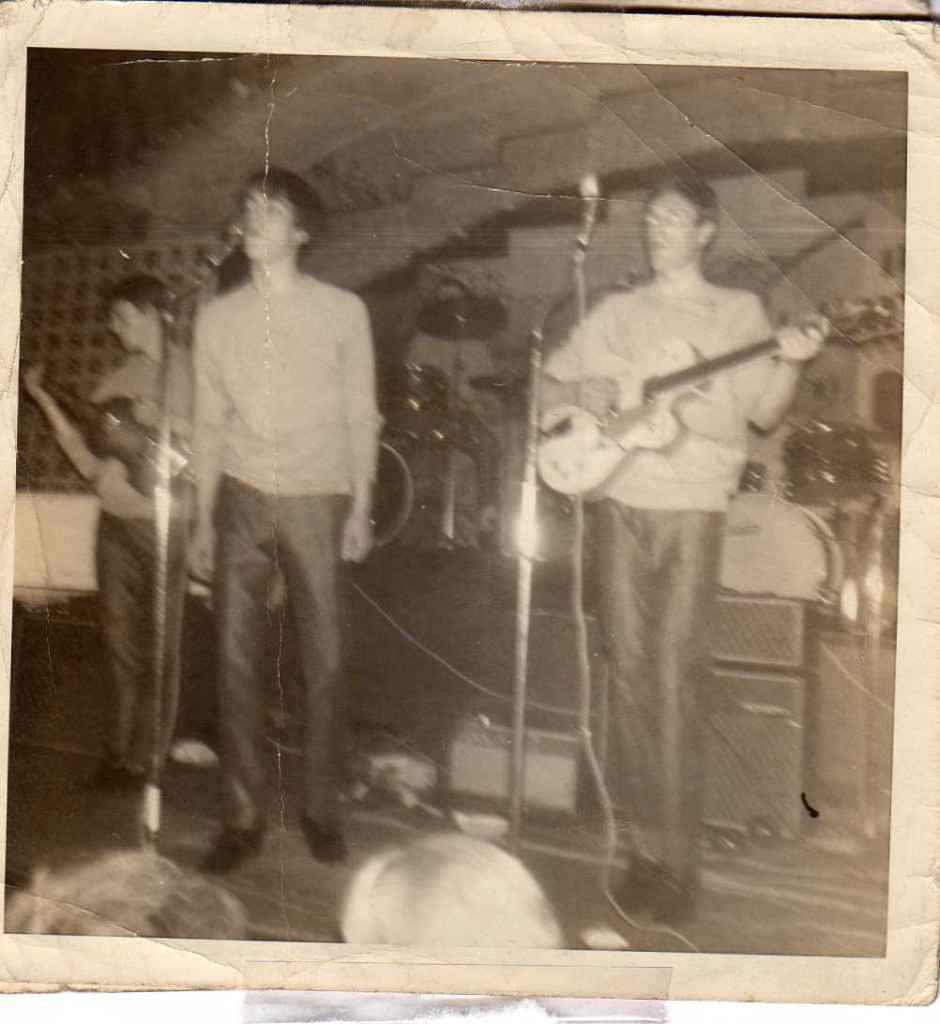 Heady stuff for a bunch of 18 year old Manchester lads. We left Manchester in our old converted ambulance, which served as our equipment wagon and bus, around 6a.m. so we would arrive at Abbey Road studios around 2p.m. None of us had ever been to swinging London, the centre of the known universe, before and we were excited and nervous. This was a big, big deal you must understand.
Heady stuff for a bunch of 18 year old Manchester lads. We left Manchester in our old converted ambulance, which served as our equipment wagon and bus, around 6a.m. so we would arrive at Abbey Road studios around 2p.m. None of us had ever been to swinging London, the centre of the known universe, before and we were excited and nervous. This was a big, big deal you must understand.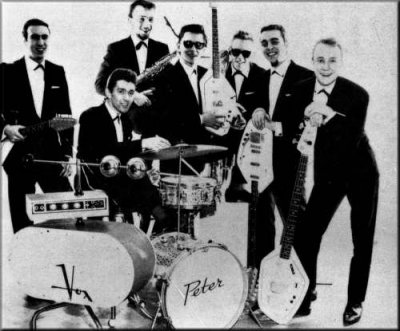 Soon after Vox started making solid-state amps, circa 1964, a pair of Vox Super Transonic amps were manufactured and given to the Jaywalkers to try out on stage. Pete believes they were the only pair ever to leave the factory. They were essentially fully-working prototypes which were given to the band to test on the road. After a quick trial we found they were unsuitable for public consumption and for any kind of bass or low-end instrument because of their small 3-inch tweeters. They were barely passable for lead guitar and rhythm guitar. We used them on tour for about a week before shipping the remains (I think in a coffin) back to the Vox factory in Dartford along with our disgruntled evaluation: In comparison to the trusty AC30s, they were a load of crap. The transistor amps sounded distorted, toneless, thin and nasty. The tweeters soon blew, the chrome hardware broke, the counter weights fell off, the casters broke, and the fuses continually blew. Even the Vox logo fell off. Needless to say, they never went into full production. The two 12-inch speakers in the lower cabinet were whatever Vox was using at that time in its AC 30s. However, the Super Transonic looked really cool. The amp and speaker cabinets were covered with the same orange vinyl cloth that was used later on the Vox Continental organ. The grill cloth was a light beige. The two tweeters were housed in circular chrome balls, balanced by a solid counterweight. They would rotate horizontally but not vertically”. *UPDATE; here are some pics we’ve found of another band using the rare super-transonic amps, Jamie & the Raiders, around 1963;
Soon after Vox started making solid-state amps, circa 1964, a pair of Vox Super Transonic amps were manufactured and given to the Jaywalkers to try out on stage. Pete believes they were the only pair ever to leave the factory. They were essentially fully-working prototypes which were given to the band to test on the road. After a quick trial we found they were unsuitable for public consumption and for any kind of bass or low-end instrument because of their small 3-inch tweeters. They were barely passable for lead guitar and rhythm guitar. We used them on tour for about a week before shipping the remains (I think in a coffin) back to the Vox factory in Dartford along with our disgruntled evaluation: In comparison to the trusty AC30s, they were a load of crap. The transistor amps sounded distorted, toneless, thin and nasty. The tweeters soon blew, the chrome hardware broke, the counter weights fell off, the casters broke, and the fuses continually blew. Even the Vox logo fell off. Needless to say, they never went into full production. The two 12-inch speakers in the lower cabinet were whatever Vox was using at that time in its AC 30s. However, the Super Transonic looked really cool. The amp and speaker cabinets were covered with the same orange vinyl cloth that was used later on the Vox Continental organ. The grill cloth was a light beige. The two tweeters were housed in circular chrome balls, balanced by a solid counterweight. They would rotate horizontally but not vertically”. *UPDATE; here are some pics we’ve found of another band using the rare super-transonic amps, Jamie & the Raiders, around 1963; 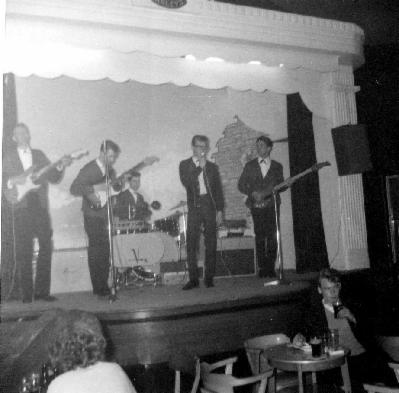
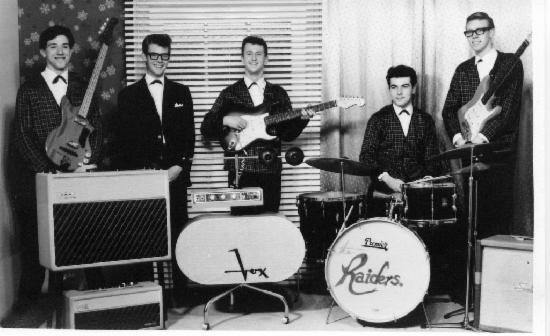
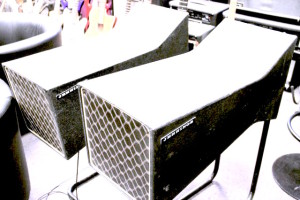
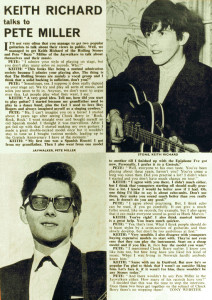
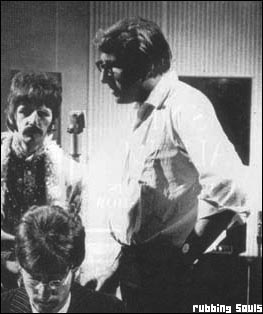
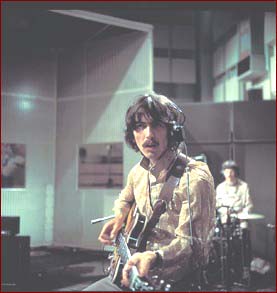
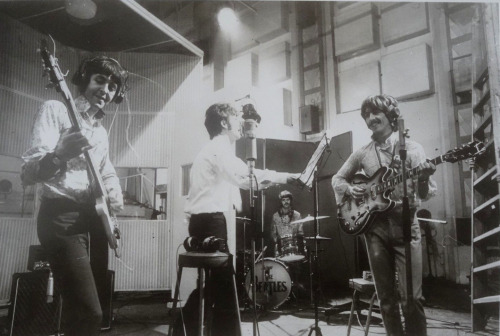
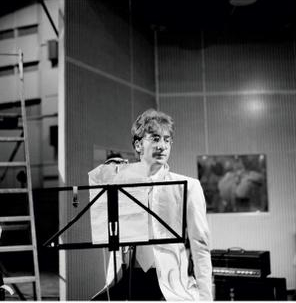
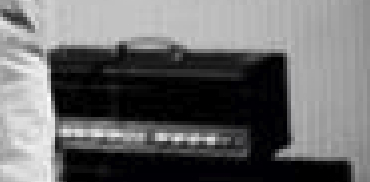
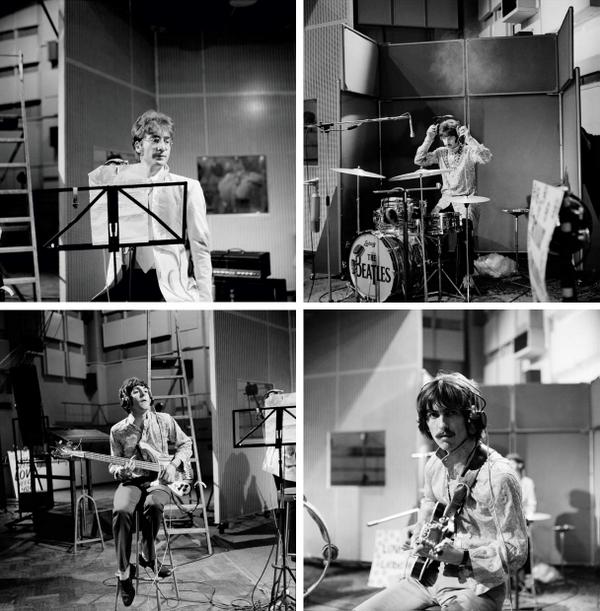
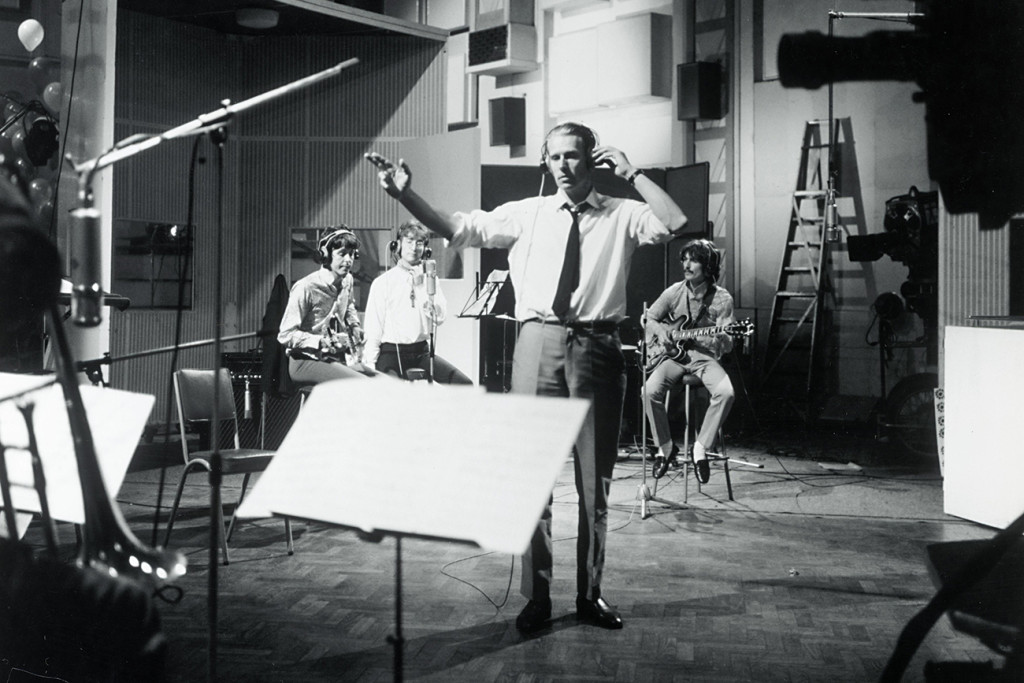
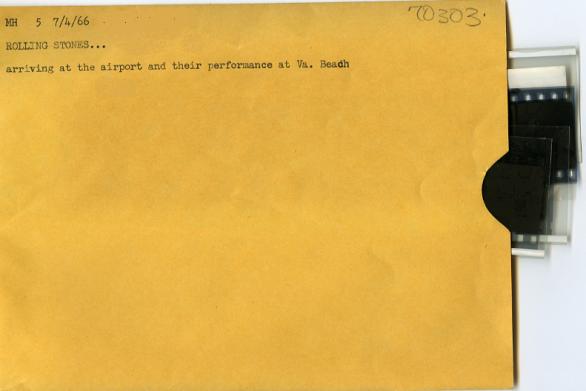 Below are ten never before published shots from that envelope. We hope you enjoy them.
Below are ten never before published shots from that envelope. We hope you enjoy them.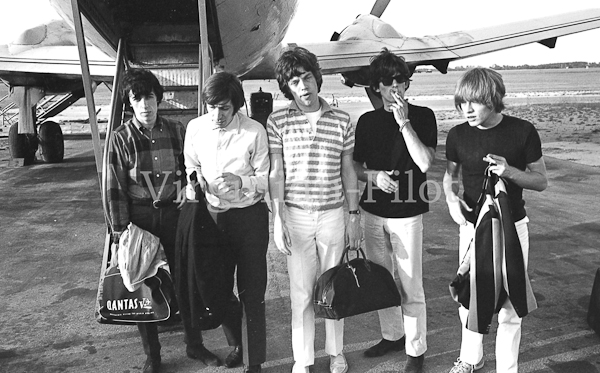 The band’s plane landed at Norfolk Airport at 6:30 p.m for a 7:30 show at the Dome. After eating dinner on board the chartered plane, the group strolled briefly on the tarmac.
The band’s plane landed at Norfolk Airport at 6:30 p.m for a 7:30 show at the Dome. After eating dinner on board the chartered plane, the group strolled briefly on the tarmac.
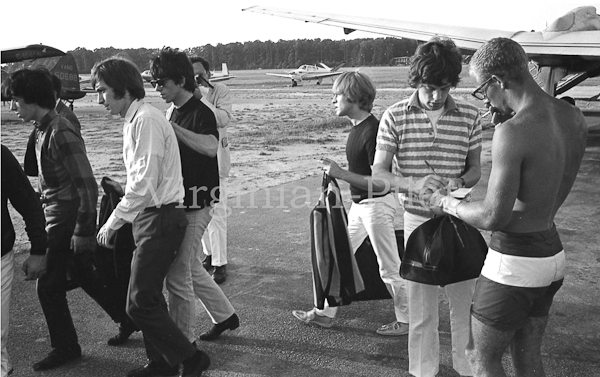
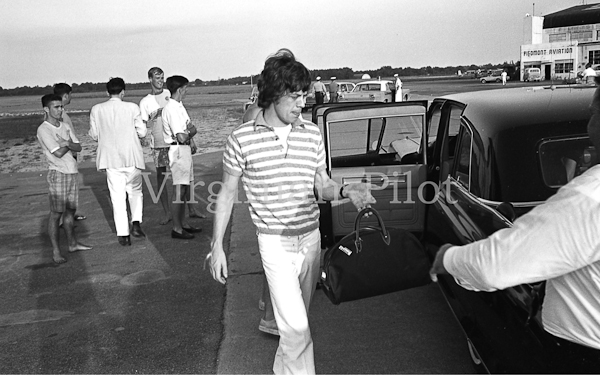 A fast, police-escorted limousine ride to Virginia Beach ends with the Stones being led into the Dome in the middle of a police flying wedge that
A fast, police-escorted limousine ride to Virginia Beach ends with the Stones being led into the Dome in the middle of a police flying wedge that 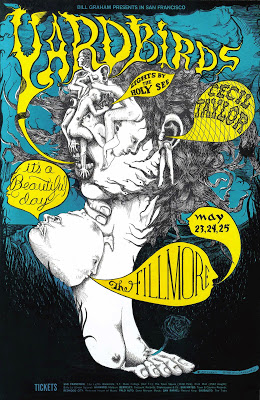 We noticed these pics on an excellent site about the final days of the Yardbirds in 1968 (
We noticed these pics on an excellent site about the final days of the Yardbirds in 1968 (


